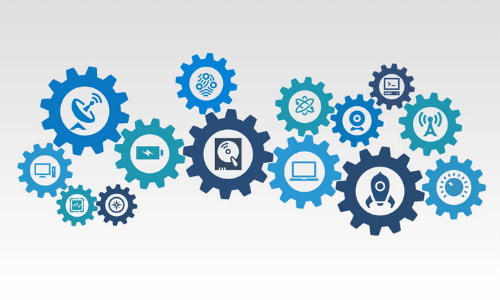Disclaimer: This post includes affiliate links. I may receive compensation if you purchase products or services from the different links provided in this article.
The efforts of launching software products can be a complicated process as it usually involves multiple parties working together across several stages whilst trying to solve technical problems.
As a result, the process of developing software is usually met with challenges that most engineering teams can relate to.
Challenges in software development can be driven by factors internal to the organisation or by external factors such as those caused by changes in the software industry as a whole.
It’s critical that engineering teams are aware of challenges in software development they are likely to face so the necessary plans and processes can be put in place to combat them.
However, these challenges are not only limited to large teams and can apply to smaller teams and individuals working on software projects.
Read on to discover ideas for how to guard yourself and your teams against these inevitable challenges so they aren’t so inevitable any more!
Several points in this article 'how to combat challenges in software development', were inspired by the book "The Pragmatic Programmer" by David Thomas and Andrew Hunt (affiliate link), a well-renowned book in the software engineering field that we recommend every developer should read.
1. Keeping up with the Trends
The software engineering world is known for its extremely dynamic nature. Technology available today can be deemed obsolete a decade later. It’s important to be aware of changing trends in the industry and adapt accordingly.
Tools, libraries, frameworks and even programming languages that developers rely on may not be so reliable later if support for them continuously declines down the line affecting the maintainability of solutions that use those components.
Don’t let yourself or your team be left behind and be aware of critical changes in technology trends.
How to Combat:
Design solutions using the concept of reversibility. This means being able to reverse an entire system or components of it so it's not reliant on a single technology, tool, vendor and if possible, programming language.
Implement solutions with architectures that are flexible enough to withstand changes without having to redesign the entire solution.
2. Ever-Changing Requirements
Requirements are the information that communicates the problem to be solved for the end-user. Requirements are therefore critical to allow engineering teams to closely solve these problems.
An all too common challenge (for any industry) is when requirements change. Reasons for evolving requirements can be: missing information, changing market demands, customers' needs changing or not evaluating requirements for technical soundness before executing them.
Requirements that are poorly communicated also result in an end product that does not match the customer’s expectations.
How to Combat:
Work closely with the end customer to understand why they need a particular problem solved. This will help in the refinement of the requirements and eliminate ones that are not essential to address the core problems the software is trying to solve.
Negotiate on an MVP (Minimum Viable Product) - a product with just enough features to be usable by customers and can be released to receive early feedback.
3. The Race Against Time and Resources
Unfortunately, the software industry is infamous for constantly missing targets on deliverables and providing timescales that should be taken with a grain of salt.
This is one of the common challenges in software development because teams are often faced with many unknowns that may be difficult to plan for. These unknowns can cause major roadblocks when faced and eventually cause delays in meeting deliverables.
There are also often gaps between expectations and what can be realistically achieved in the given time frame.
This can be caused by agreeing on deadlines before the full scope of the project is evaluated. Estimating when products can be delivered to end-users takes proficient planning and awareness of the technical challenges the project will come across.
Poor resource management also plays a factor and lack of resources and skills needed to deliver on projects will put pressure on individuals and have negative effects on productivity.
How to Combat:
Perform sufficient research and planning beforehand that will provide clues on where roadblocks could source from. Don’t be surprised by roadblocks, anticipate them.
Set clear and realistic expectations on what can be achieved given the available resources. Get better at estimating to avoid surprises and continuously re-evaluate timescales as the project progresses.
4. Maintenance Struggles
All software requires maintenance at some point. Balancing maintenance activities while continuing on with core development activities can be one of the common challenges in software development.
Maintenance can be required for shipped products or for ones still in the development stages.
“All software becomes legacy as soon as it’s written” - Andrew Hunt & David Thomas (The Pragmatic Programmer Book)
A codebase not touched for years may need an urgent bug fix. A project in the active development stages may need a continuous update of the environment and tools. These are all examples of maintenance activities that should not be overlooked.
How to Combat:
Do not neglect to tackle potentially unexpected maintenance activities that may arise throughout a project.
The availability of software documentation such as on source code, software design and development processes will allow critical information to be passed onto developers that will handle the maintenance of the product.
5. Neglected Testing
We can all agree that testing is one activity that should not be neglected when developing software. However, testing is often not given the necessary attention especially as deadlines approach.
Not placing enough effort on testing will not only negatively affect the robustness and quality assurance but software riddled with bugs will reduce the end-users confidence in the product.
How to Combat:
View testing as a critical activity and allocate sufficient time and resources for it during the project planning phases.
Document testing requirements that will set expectations on the type and level of testing processes that should be carried out at various stages of the project.
6. The Technical Debt Bill
Technical debt is an analogy describing a trade-off between a shorter time to market launch and software quality assurance.
Like financial debt, technical debt accumulates interest and the longer it takes to pay back the higher the interest will be.
“Shipping first time code is like going into debt. A little debt speeds development so long as it is paid back promptly with a rewrite…
The danger occurs when the debt is not repaid. Every minute spent on not-quite-right code counts as interest on that debt.
- Ward Cunningham, The WyCash Portfolio Management System
Software is never perfect, so technical debt is inevitable. The danger is when engineering teams are unaware of the debt, or when they refuse to pay it back promptly.
How to Combat:
The first challenge engineering teams must overcome is accepting that technical debt is not imaginary and should be taken seriously. Next, become aware of the sources of technical debt and indications of accumulating debt.
Like any other activity, plan technical debt pay back into your software development processes. This will ensure the debt is not neglected and will prevent the team from being overloaded with debt interest before realising it too late.
7. Glaring Gaps in Communication
Clear and effective communication is an essential part to the success of any project. This is even more crucial when considering the technical challenges in software development and the efforts to reach solutions to complex problems.
It's all too easy for gaps in communication to appear. Gaps can appear amongst the developers on a team or between developers and external influences such as stakeholders.
The consequences of this can be a misalignment of the goals of a project and lack of ownership which will only cause confusion and disorganisation.
How to Combat:
Set expectations on the methods and frequency of communication before a project begins.
Will an Agile approach be used? How will progress be communicated to stakeholders? Will teams have daily standups? Are periodic meetings necessary? As too many meetings can be detrimental to productivity, agree on a non-intrusive schedule amongst the relevant parties.
There are numerous challenges in software development that most engineering teams will face at some point. A good first step in combating these challenges is acknowledging them and putting processes in place to handle or prevent them from occurring.
With each project you’re involved with, whether past or current, reflect on what challenges you faced and evaluate how to tackle them more effectively the next time.
Which of these challenges in software development can you relate with?
Inspirezone.tech is a developer community focused on encouraging active coding practice and reaching your goals through accountability with other devs in a close-knit community. If this sounds interesting to you consider joining us or following us on Twitter 💻 ✨













Top comments (0)